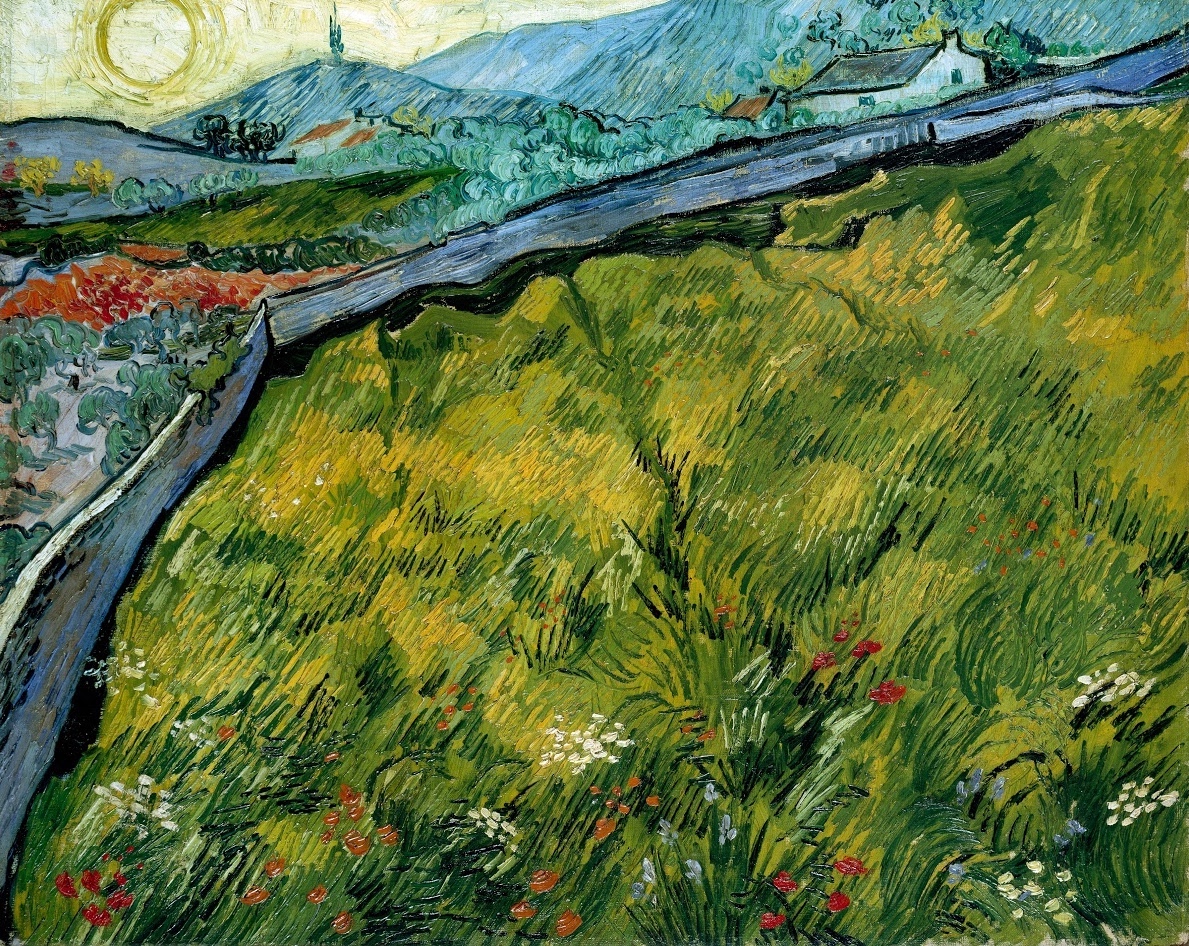The Enclosed Field at Sunrise by Vincent van Gogh

Van Gogh often painted this view from his hospital window at St Remy, using the window itself as a sort of perspective frame. He had tried to master the laws of correct perspective by reading textbooks on the subject, and in one of his letter, he had had a perspective frame made to help him in achieving it. The device is merely an empty frame, across which a grid of strings is drawn. This grid is also drawn onto the canvas or page.
The artist looks at the motif through the frame, siting the scene and its objects in relation to the strings and then drawing or painting them in a corresponding position on the squared-up page or canvas. The point at which the strings cross provides the vanishing point, an imaginary point of distance which should match, in a mirror-like fashion, the viewpoint of the spectator. By this means a three-dimensional scene is transferred to a two-dimensional plane, and the space, perceived from this artificial, single viewpoint, is organized to appear logical and coherent, a kind of window on the world. However, if, as Van Gogh was given to doing, the artist deviates from the single viewpoint, looking above, below, or to the sides of the perspective frame and thus incorporating many viewpoints, the effect can be quite disarming, as is the case in this painting. The foreground and background do not match.
The foreground, painted as if the grass and poppies are immediately beneath our feet, seems to tilt and slide forwards and downwards, thwarting the intended planar recession to the infinitely more distant background. The deviations from traditional geometric systems for representing space, created by Van Gogh's unsystematic use of these systems, serve, however, to produce an effect of dynamic space and immediacy.




















